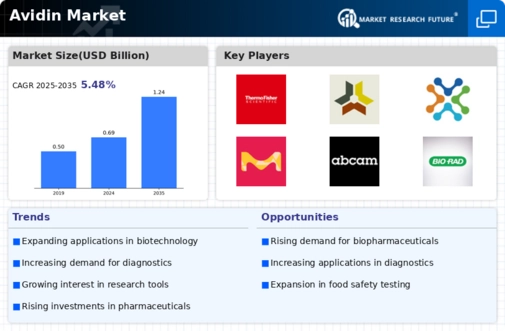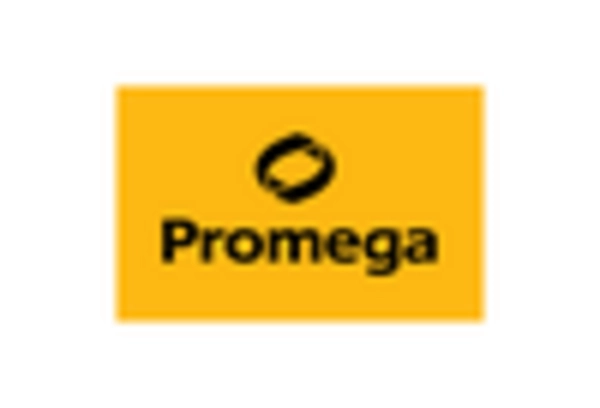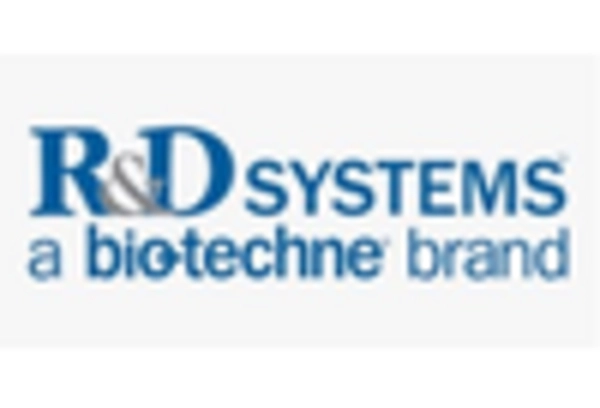Increasing Applications in Research
The Avidin Market is experiencing a notable surge in demand due to its increasing applications in various research fields. Avidin Market, a glycoprotein, is extensively utilized in molecular biology, particularly in the development of assays and detection systems. The versatility of avidin-biotin technology has led to its adoption in numerous research applications, including genomics and proteomics. As research institutions and laboratories continue to expand their capabilities, the need for high-quality avidin products is likely to grow. This trend is further supported by the rising number of research publications that utilize avidin in their methodologies, indicating a robust market potential for avidin-based products in the research sector.
Expansion in Diagnostic Applications
The Avidin Market is witnessing significant growth driven by its expanding role in diagnostic applications. Avidin Market's unique binding properties make it an essential component in various diagnostic assays, including enzyme-linked immunosorbent assays (ELISA) and other immunoassays. The increasing prevalence of chronic diseases and the demand for rapid diagnostic tests are propelling the market forward. According to recent data, the diagnostic segment is projected to account for a substantial share of the avidin market, reflecting a shift towards more efficient and accurate diagnostic solutions. This trend suggests that the Avidin Market is poised for continued growth as healthcare providers seek innovative tools to enhance diagnostic accuracy.
Rising Demand in Therapeutic Applications
The Avidin Market is also benefiting from the rising demand for therapeutic applications. Avidin Market's ability to bind biotinylated drugs and therapeutic agents is being explored in various treatment modalities, including targeted therapy and gene therapy. The increasing focus on personalized medicine and the development of biopharmaceuticals are driving the need for avidin-based solutions. Market data suggests that the therapeutic segment is anticipated to grow significantly, as researchers and clinicians seek effective methods to enhance drug delivery and efficacy. This trend indicates a strong potential for the Avidin Market to expand its footprint in the therapeutic landscape.
Technological Advancements in Biotechnology
The Avidin Market is significantly influenced by technological advancements in biotechnology. Innovations in bioconjugation techniques and the development of novel avidin derivatives are enhancing the functionality and applicability of avidin in various biotechnological processes. These advancements are facilitating the creation of more sensitive and specific assays, which are crucial for both research and clinical applications. Furthermore, the integration of avidin in emerging technologies, such as biosensors and targeted drug delivery systems, is likely to open new avenues for market growth. As biotechnology continues to evolve, the demand for advanced avidin products is expected to rise, indicating a promising future for the Avidin Market.
Growing Interest in Bioconjugation Techniques
The Avidin Market is experiencing growth due to the increasing interest in bioconjugation techniques. Avidin Market's strong affinity for biotin makes it a valuable tool in the development of bioconjugates, which are essential for various applications, including drug development and diagnostic assays. The rising demand for bioconjugated products is driven by their ability to improve the specificity and sensitivity of assays, thereby enhancing research outcomes. As more researchers and companies recognize the advantages of using avidin in bioconjugation, the market is likely to see a corresponding increase in the availability and variety of avidin-based products. This trend suggests a dynamic evolution within the Avidin Market.


















Leave a Comment